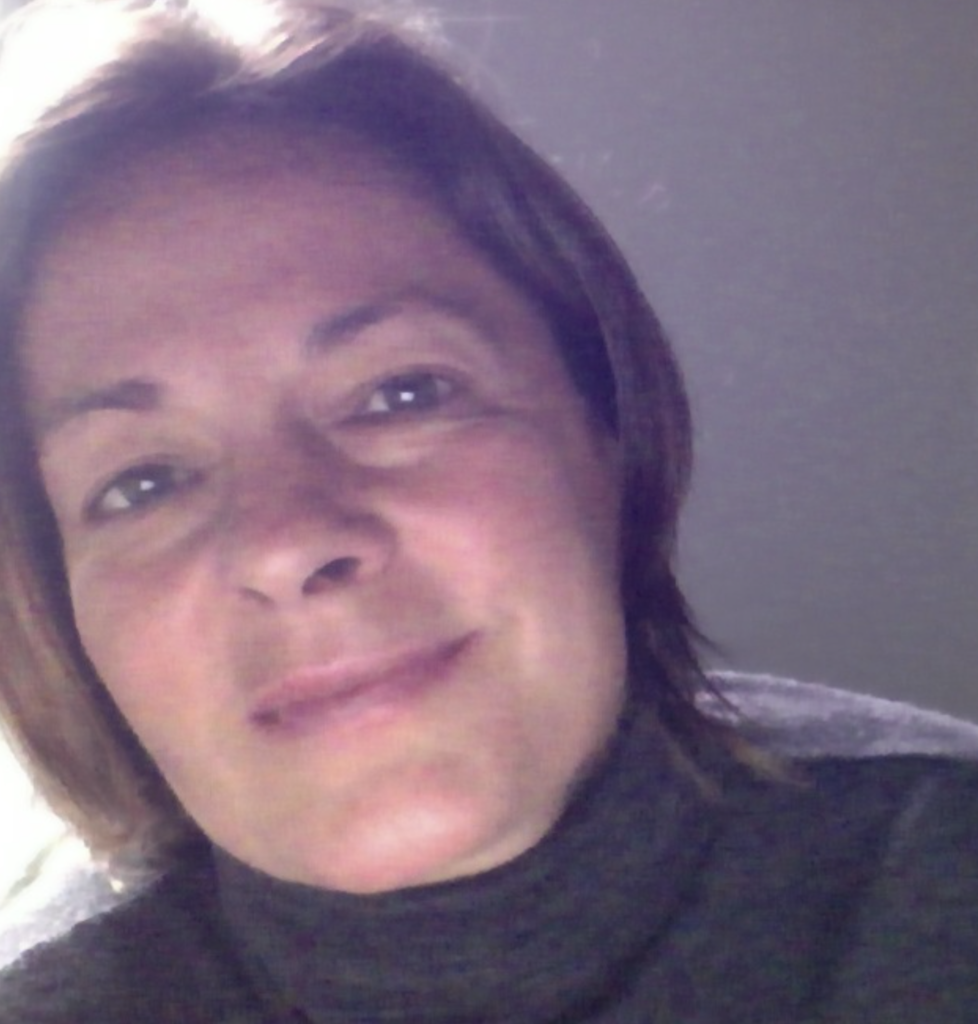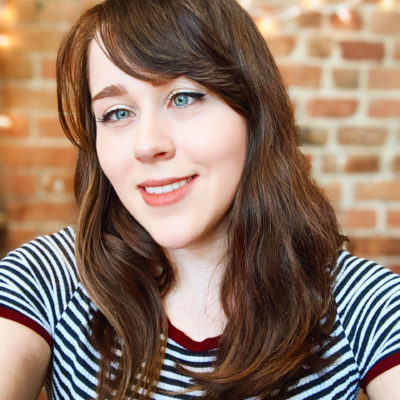
In ways I’m sure many emerging scholars can relate to, I have found myself continually renegotiating facets of my background, identity, and interests throughout my educational career. Finding spaces and opportunities that enable you to make use of all of your skills and experiences in meaningful ways can be a challenge. As such, it’s always refreshing to speak with someone like Dr. Teresa Connors who has successfully brought together her artistic vision and creative practice and the world of data and research to create magnificent audiovisual installations. After getting to know a bit about her recent work through this interview, I encourage you to explore her Vimeo channel and would especially recommend listening to and watching Currents and From The Edge to get a better sense of the topics discussed below.
What most excites you about your research and artistic practice right now?
My current practice-based creative research explores the use of environmental datasets as a co-creative device for constructing audiovisual installations for public engagement. The practice is embedded in an ecological discourse and large-scale collaborations with diverse stakeholders, including the Marine Institute of Newfoundland and Parks Canada. Collaboration is foundational in my artistic practice. Broadening the scope of partnerships to fields typically outside creative inquiry is valuable and exciting as I am committed to embedding practice-based research into larger hubs of exploration.
Can you give a bit of a teaser for your planned presentation for the symposium?
My original presentation for the 2020 Listening, Sound, Agency Symposium proposed a series of thinking-in-the-making moves that considers the use of environmental dataset as a co-creative device through the lens of Karen Barad’s notion of intra-action. Specific to my research in nonlinear audiovisual installations is Barad’s concept and handling of performativity, which has provided me with insightful ways to ask new questions from the core of creative practice as it progresses in the field and studio.
With the postponement of The Listening, Sound, Agency Symposium, due to the Covid-19 crisis, my 2021 presentation will broaden and fold into this discussion, ideas from Jane Bennett’s new publication, influx and efflux. Here Bennett expands on her notion of ‘thing-power’ to “invok[e] that ubiquitous tendency for outsides to come in, muddy the waters, and exit to partake in new (lively/deadly) waves of encounters” (Bennett 2020).
Bennett has been a friend of my research since 2014 and remains an essential thinker who contributed to what I have come to call Ecological Performativity. This is a mode of practice that considers—in act and thought—the context and formative creative process, and the resulting artifacts, as a responsive embodiment of larger structures of phenomena. Here, the notion of creativity shifts from an anthropocentric understanding to a relational and performative ontology where the interactions between people, places and things constitute a dynamic mode of artistic practice. (I borrow the term friend from Erin Manning and Brian Massumi’s interpretation of Deleuze’s notion of the intercessors: “the felt force that activates the threshold between thinking and feeling.” Thought in the Act: Passages in the Ecology of Experience).
To support my position, I critique two of my recent nonlinear audiovisual installations, From the Edge and Currents, which emerge from field recordings on the east coast of Newfoundland, Canada. Using live streamed environmental datasets, these works explore material agency from these situated encounters in a nonlinear aesthetic. Beyond technical considerations, Bennett and Barad’s ideas introduce a way of thinking and being in artistic practice that problematizes representationalism and human exceptionalism to locate a position on natural-cultural and knowledge-making practices and does so by rethinking the role that material agency plays in understanding the world.
Spatial specificity, in regards to the natural environments of Newfoundland, sourced for data-sets in both Currents and From The Edge and the location and physical setup of your installations, appears to be a significant consideration in your recent work. How does a site-specific approach to your creative process relate to your interest in “ecological performativity”? How does this theoretical concept inform your work more broadly?
The environments I work in emerge during extended field recording trips. These field recordings have taken place throughout North America and New Zealand and usually last for an extended time. Field recordings begin in a matter-of-fact process of dealing with equipment (making sure all batteries are charged, etc.). However, these functional aspects and the experienced environmental influences become operative agents in the collection of materials. Basically, a process of emergence takes over with what is experienced in different environments. And environments can be anything: from a crowded airport to a polluted lake or a beautiful forest.
In the case of Currents and From the Edge, the field recording process specifically focused on the east coast of Newfoundland, Canada. I was hired for a two-year postdoc research position at Memorial University of Newfoundland with the International Institute for Critical Studies in Improvisation and decided to embed my practice in that environment. Two forces that are constant on the east coast of Newfoundland is wind and the ocean. These forces became the starting point for the creative inquiry, after which other interweaving pathways of practice emerged.
As to using environmental data—it’s an aspect of my practice that has evolved out of my 25-year field recording practice. Over time, I’ve become curious to find other material from the situated encounters beyond the visuals and sonics. The use of environmental data fulfills this curiosity and provides new insights into the possibilities emerging from the intersection of intelligent machines, contemporary art and ecological discourses.
Through my shift to a non-linear praxis, the creative practice has become more of an entangled co-creative process in the environments and with the materials. So, it has to do with the context of each work, which in turn informed the pathways of practice and elements that are placed into the installation system.
How has your training and experience as a singer and musician shaped your approach to sound in your research and in the development of the sonic components of your immersive audiovisual installations?
Good question, Ali.
My training and experiences as a singer and musician have tuned my ears to hear all sound as some sort of melody/rhythmic/musical source, which influences the recording process. Additionally, as a singer, thinking in terms of agency and the performative is entrenched in my practice. I consider the process of singing a visceral transmission of energy embodied in the movement of the breath, the vibration of the vocal cords and the emotional intentions behind the endeavour. In his publication Why Do Whales and Children Sing, David Dunn sums it up nicely in suggesting that sound (including singing) is an intrinsic part of the fabric of life and that “music may be a conservation strategy for keeping something alive that we may now need to make more conscious. A way of making sense of the world from which we might refashion our relationship to nonhuman living systems.” With this in mind, my approach to developing my immersive audiovisual installation includes acoustic musical improvisation as an element that folds into the system. Including the singing voice in these non-linear systems has become a research goal of mine to find different ways to involve this “visceral transmission of energy.”
Dr. Teresa Connors is active as a creative coder, audiovisual installation and interdisciplinary artist. Her works have received awards and support from the Canada Council for the Arts and British Columbia Arts Council, and have been presented at international conferences, film festivals and galleries and published in leading journals. Having recently completed postdoctoral research with the International Institute for Critical Studies in Improvisation, Teresa’s current artistic focus is the live- streaming of environmental datasets as a co-creative device for interactive public engagement artworks (http://www.divatproductions.com/).
This article is published as part of the Listening, Sound, Agency Forum which presents profiles, interviews, and other materials featuring the research and interests of future participants in the 2021 SpokenWeb symposium. This series of articles provides a space for dialogical and multimedia exchange on topics from the fields of literature and sound studies, and serves as a prelude to the live conference.
